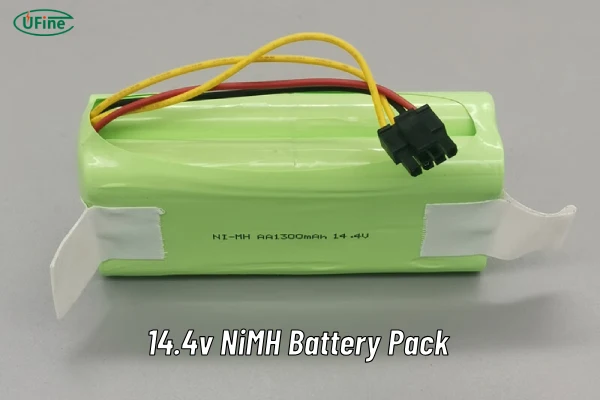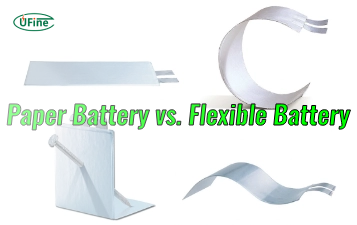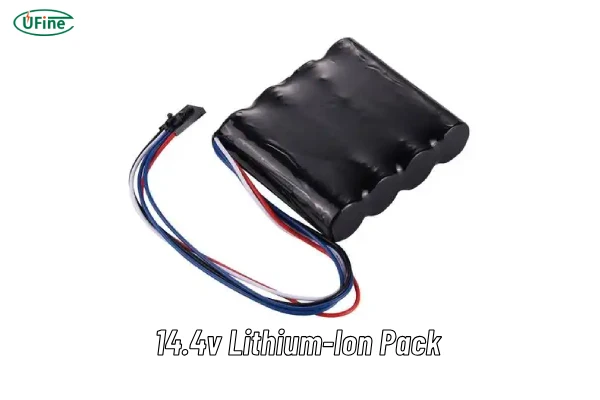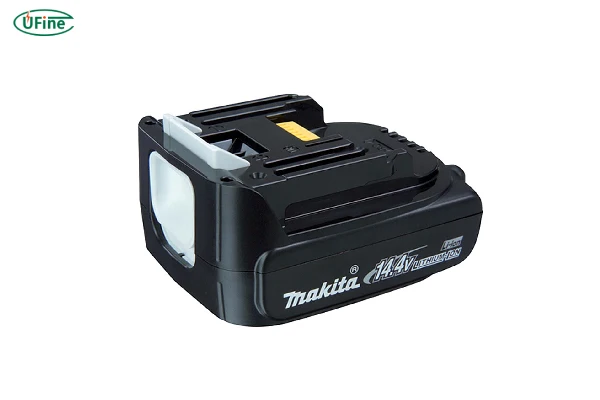The 14.4V battery has become a staple power source in numerous devices, from powerful cordless tools to medical and household equipment. The blend of sufficient voltage and manageable size makes it a top choice for users who need reliable power that’s easy to handle and transport. These batteries come in various chemistries and types, each offering unique benefits suited to different needs.
In this article, we’ll dive deep into what makes the 14.4V battery so versatile. We’ll look at its types, structure, charging needs, and best practices for maximizing lifespan. By understanding the full range of 14.4V batteries, you’ll be better prepared to choose the right one and make it last as long as possible.
Part 1. What is a 14.4 volt battery?

A 14.4V battery is a rechargeable power source that delivers a nominal voltage of 14.4 volts, which means it provides enough energy to drive demanding devices without being overly large or heavy. This balance between power output and portability is why these batteries are widely used in portable tools and applications where stable, long-lasting power is a necessity.
In practical terms, a 14.4V battery powers everything from heavy-duty tools to specialized medical devices, robotics, and industrial equipment. For instance, if you’ve ever used a cordless drill or vacuum cleaner, there’s a good chance a 14.4V battery was the driving force behind its operation. It provides just enough voltage to tackle tougher jobs, yet its size and weight remain practical, making it a preferred choice for various applications.
If you’re looking for a reliable and customizable option, Ufine Battery offers a range of 14.4v batteries tailored to specific needs. They provide high-quality Li-ion, LiPo, and LiFePO4 batteries, allowing you to choose a model that perfectly fits your device.
Part 2. Types
The type of 14.4V battery you choose directly affects the performance, weight, longevity, and environmental impact. Here’s a breakdown of the most common types, each with distinctive characteristics that make them suitable for different uses.
-
Lithium-Ion (Li-ion): Known for their high energy density, lightweight structure, and long life, lithium-ion batteries have taken the lead in portable electronics and power tools. They’re powerful and can handle multiple charging cycles without significant capacity loss. However, Li-ion batteries are sensitive to extreme temperatures and require protective circuits to prevent overcharging, which can impact their long-term performance.
-
Nickel-Cadmium (NiCd): A more robust option often used in industrial settings, NiCd batteries are known for their durability and ability to withstand heavy usage. They’re often found in tools that need continuous, reliable power, even in extreme environments. However, they come with a few downsides: they’re heavier, have a limited lifespan due to the “memory effect” (which requires full discharge before recharging), and contain cadmium, an environmentally harmful element that requires careful disposal.
-
Nickel-Metal Hydride (NiMH): NiMH batteries were designed to address some of the environmental issues of NiCd batteries while providing a similar energy density. They perform well but are generally heavier than Li-ion batteries. One downside of NiMH batteries is their higher self-discharge rate, meaning they lose charge faster when not in use. This makes them less suitable for infrequent-use applications but still a viable option for many household devices and tools.
-
Lithium Iron Phosphate (LiFePO4): Known for exceptional safety and longevity, LiFePO4 batteries have become increasingly popular, especially in applications where long-term stability is essential. These batteries handle temperature fluctuations and high discharge rates well, making them a top choice in industrial, medical, and backup power settings. While slightly heavier, their durability and reduced risk of overheating make them a preferred option for safety-focused users.
Each type has specific strengths, so consider your device’s needs carefully to find the ideal match. Lithium-ion is popular for daily-use gadgets, while LiFePO4 is ideal for high-stress, safety-priority environments.
NiMH Battery vs Li-Ion Battery vs NiCad Battery: How are they different?
Part 3. Basic components
Understanding the basic components of a 14.4V battery helps in appreciating how each element contributes to the battery’s function and durability. Here are the core components:
-
Anode (Negative Electrode): Often made of lithium in Li-ion batteries or cadmium in NiCd batteries, the anode is essential for energy storage and release.
-
Cathode (Positive Electrode): The material varies by type—nickel oxide for NiCd, manganese oxide, or lithium cobalt oxide for Li-ion. This component is crucial for generating the electrical flow.
-
Electrolyte: This medium allows ions to flow between the anode and cathode. In Li-ion batteries, it’s a lithium salt solution, while in NiCd and NiMH, potassium hydroxide is commonly used.
-
Separator: This part physically separates the anode and cathode, preventing short circuits while enabling ion transfer for a smooth power supply.
-
Casing: The outer shell that houses all components, made from materials that vary based on the battery’s intended use—plastic for lighter applications or metal for heavy-duty settings.
Part 4. How many cells does a 14.4 volt battery have?
Most 14.4V batteries are made up of multiple cells linked in series to reach the specified voltage. Here’s how it breaks down by type:
-
Lithium-Ion Cells: Generally, four cells, each with a nominal voltage of 3.6V, are connected in series to achieve 14.4V (4 x 3.6V = 14.4V).
-
Nickel-Based Cells (NiCd, NiMH): With each cell providing 1.2V, a 14.4V NiCd or NiMH battery typically requires 12 cells in series (12 x 1.2V = 14.4V).
Part 5. How long does it take to charge a 14.4 volt battery?
Charging times can vary significantly depending on the battery type, charger speed, and capacity. Here’s an average look:
-
Lithium-Ion: With a fast charger, Li-ion batteries can take between 1 to 3 hours to fully charge, making them convenient for frequent use.
-
Nickel-Cadmium: Charging NiCd batteries typically takes longer, around 3 to 5 hours, as slower charging helps mitigate memory effect and prolongs lifespan.
-
Nickel-Metal Hydride: NiMH batteries need 2 to 4 hours on average. Using a slow charger may help reduce self-discharge issues.
-
Lithium Iron Phosphate: LiFePO4 batteries, known for their stable charge cycles, often require around 2 to 3 hours for a complete charge.
Part 6. How long does a 14.4v battery last?
The lifespan of a 14.4V battery depends on its chemistry, capacity, and how well it’s maintained. Here are some typical ranges:
- Lithium-Ion: Around 300 to 500 cycles, translating to 2 to 3 years with regular use.
- Nickel-Cadmium: 500 to 1,000 cycles, provided it’s fully discharged and recharged.
- Nickel-Metal Hydride: Roughly 300 to 500 cycles, though higher self-discharge can reduce lifespan.
- Lithium Iron Phosphate: Known to last over 2,000 cycles, making it ideal for long-term, heavy-use applications.
Part 7. Where is a 14.4 volt battery used?
The versatility of 14.4V batteries makes them popular across various fields. Common applications include:
- Power Tools: Drills, saws, and sanders rely on the power and portability of 14.4V batteries.
- Medical Devices: Portable health equipment uses 14.4V batteries for reliable, uninterrupted power.
- Robotics: Robotics often rely on these batteries due to their stable voltage and ease of handling.
- Household Appliances: Cordless vacuums and lighting systems often use these batteries for extended, portable power.
Part 8. Charging and maintenance
To get the best from a 14.4V battery, follow these essential care tips:
- Use the Correct Charger: Each battery type requires a specific charger to avoid damage.
- Avoid Overcharging: Remove from the charger once full, as continuous charging can reduce lifespan.
- Store in a Cool, Dry Place: Heat and moisture are enemies of battery longevity.
- Regularly Discharge NiCd and NiMH Batteries: Avoid memory effect by allowing full discharge cycles for NiCd and NiMH batteries.
Part 9. Final words
A 14.4V battery is a dependable power source across various applications, from cordless tools to medical devices. By choosing the right type and following best practices in charging and maintenance, you’ll be well-equipped to maximize its lifespan and efficiency. Whether you need robust power for industrial tasks or portable energy for home devices, the 14.4V battery delivers the versatility and performance you can count on.
Related Tags:
More Articles

Paper Battery vs. Flexible Battery: What’s the Difference and Which Is Better?
Paper vs. flexible batteries: learn the key differences, benefits, and which power source fits best for wearables, sensors, and smart tech.
What to Know Before Buying a Tiny LiPo Battery for Your Project
Tiny LiPo batteries are powerful and compact. Learn how to choose the right one for your project with specs, safety, and charging tips.
Bloated LiPo Battery: Will It Explode?
Will a bloated LiPo battery explode? Discover the causes, risks, safety steps, and expert tips to avoid disaster and protect your gear. Must-read safety guide!
12V 100Ah Lithium Ion Battery Price: Full Guide
Learn about 12V 100Ah lithium-ion battery price, from cost ranges to best brands, hidden fees, and how to get the best deal. A must-read for smart buyers!
Resistance and Conductivity: What It Means for Your Lithium Batteries
Resistance and conductivity impact lithium battery performance, lifespan, and safety—learn how they work and why they matter.





